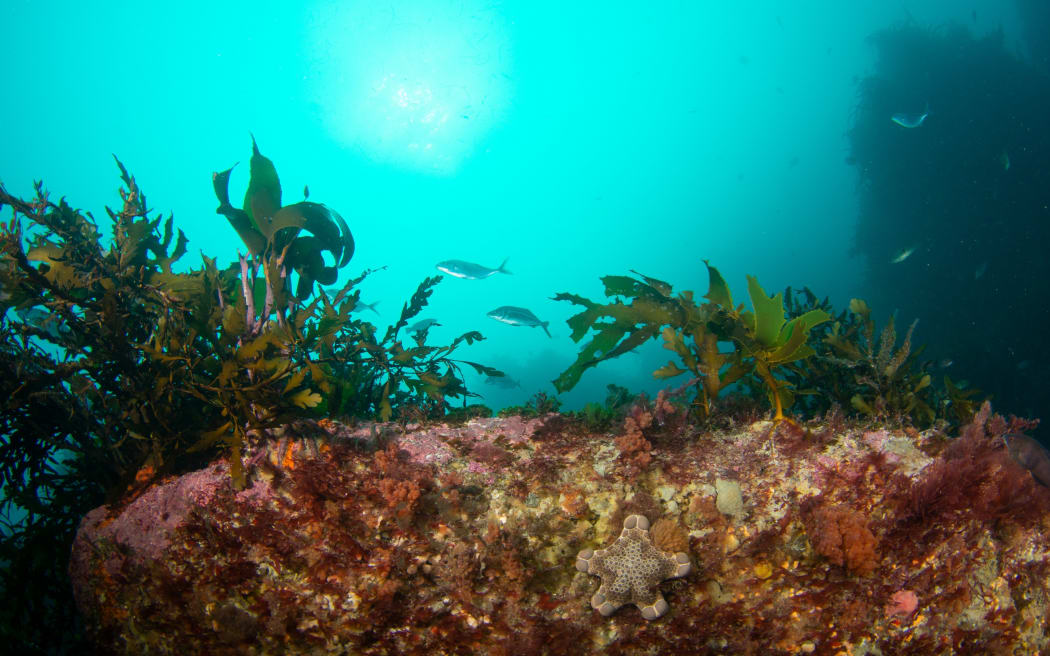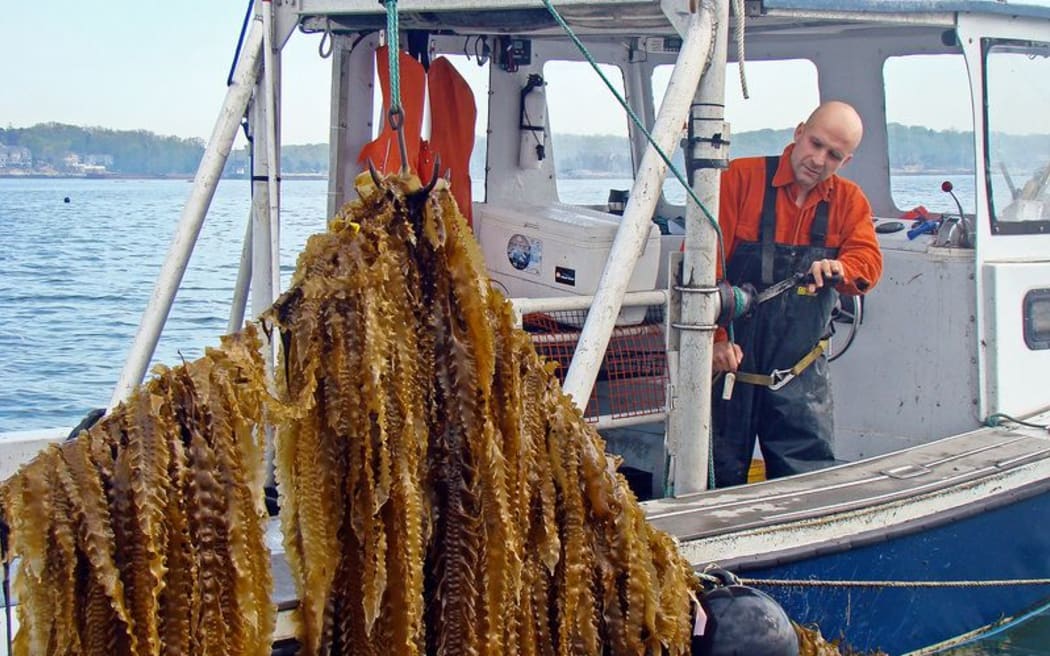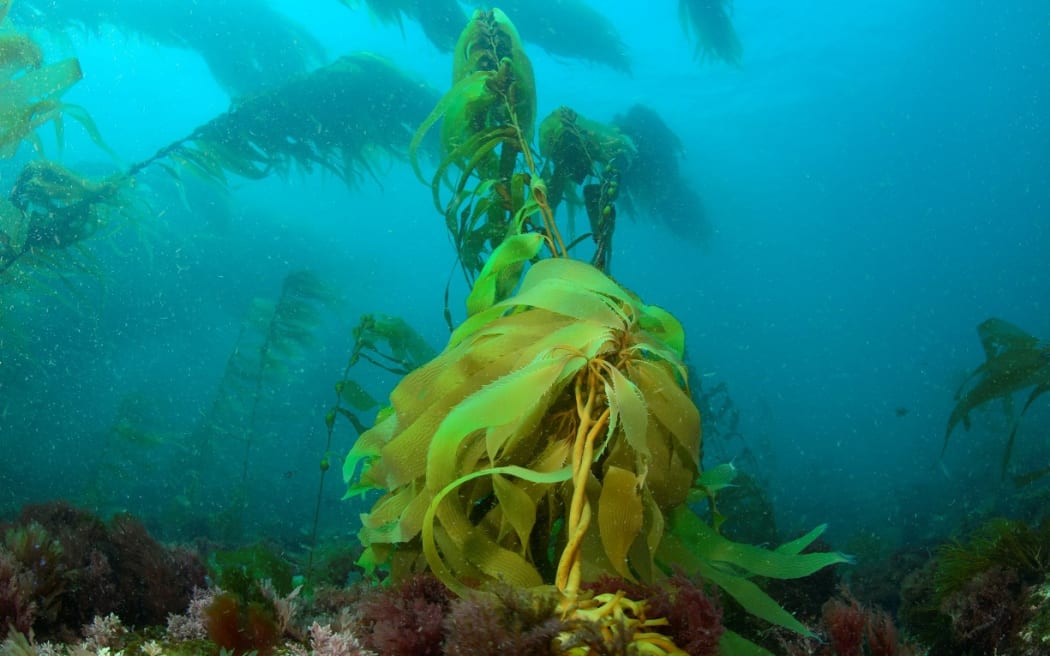Aotearoa has the potential to develop a seaweed sector that could contribute to the economy while supporting thriving ecosystems, communities and culture.

Kaikōura seaweed. Photo: NIWA / Leigh Tait
While some companies harvest seaweed, or rimurimu, in New Zealand by gathering it from the shore or as bycatch from mussel farms, there are no large-scale commercial farms or hatcheries.
The Sustainable Seas Challenge project, led by researchers from Nelson's Cawthron Institute and EnviroStrat has spent the last two-and-a-half-years developing a seaweed sector framework in order for the country to make economic, environmental, social and cultural gains.
The roadmap was launched today to show how the country could grow the sector.
It highlights barriers to growth such as investment, regulation, and a lack of knowledge and suggested the industry look at research and development for creating seaweed hatcheries.
At the inaugural Seaweed Summit in Nelson, fisherman Bren Smith said he became an ocean farmer when the search for sustainability led him to oysters, mussels and then seaweed.

Kaikōura seaweed. Photo: NIWA / Leigh Tait
A co-founder of GreenWave, a non-profit focused on developing regenerative farming techniques for aquaculture, Smith now farms shellfish and seaweed in Long Island Sound off the coast of New York.
"The power of seaweed and seaweed farming is that it's regenerative, so we are sequestering carbon, nitrogen and rebuilding reefs, it's zero input so no freshwater, no fertiliser, no feed - it makes the most sustainable food on the planet.
"Like anybody who is growing food that doesn't require input, it's going to make it really affordable in this era of climate change."
Smith said those farming shellfish were already well poised to use their skills to farm seaweed, too.
"That whole supply chain is here already and I wouldn't be surprised if New Zealand leaps ahead of the US because of the planning and also the existing infrastructure and skills."
Smith said seaweed farming was both replicable and scalable, which is what made it a really powerful climate solution.
But he said it was difficult to grow food underwater, so open-source collaboration was key to growing the sector.
"We need to learn together, share everything, become like a hive mind and then at some point we will all compete."

Fisherman and GreenWave co-founder Bren Smith. Photo: Supplied
Smith said ocean farming for him was a "soul-filling job".
"I can still have my own boat, no boss and the pride of feeding my country, we need more of those jobs that we can write and sing songs about.
"It would be pretty amazing if everyone wakes up in the morning, uses their blue collar innovation in order to fix climate change and I think seaweed offers that opportunity."
It could soon be a reality in the Eastern Bay of Plenty, where Te Whānau-ā-Apanui have plans to establish a commercial seaweed farm off the coast of Te Kaha.
Te Hēteri Haydn Read said the iwi has signed a partnership deal with one of the largest seaweed producers in North America, that has seaweed farms in Mexico and Alaska.
It plans to develop a commercial seaweed operation with a hatchery, farming and processing facilities.
"The science and the knowledge of the industry is growing in New Zealand so it makes good sense to step into that space that they are already very aware of."

Seaweed. Photo: NIWA / Leigh Tait
Read said the iwi has fishing quota, a long history of exporting crayfish and it was currently building a mussel spat hatchery.
He said Aotearoa's water space out to the 12-mile offshore covered more area than the agricultural industry did on land.
"We have the ninth largest EEZ on the planet so we have an enormous potential to shift the productive capacity of New Zealand off the land into the sea and actually have the resources to be able to do it."
Sustainable Seas Challenge project lead and Cawthron Institute marine scientist Rob Major said there were a number of potential uses for commercially grown seaweed.
"New Zealand is very lucky we have got 1000 plus species of seaweed, many are native and we have really good water for growing seaweed.
"Based on that diversity there are lots of opportunities for our species to have applications that current species overseas don't have."
Karengo, a native seaweed that has been eaten for generations by Māori is very high in protein and has potential as a sustainable protein source.
While asparagopsis, a species with methane busting properties, could be used as a feed additive for livestock to reduce greenhouse gas emissions.
Seaweed also has potential to be used for pet food, plastic packaging, biochemicals, and nutraceuticals, as well as in fabrics and as building materials in construction.
One of the framework's main recommendations has already been met with the launch of a new sector voice, the Aotearoa New Zealand Seaweed Association.
It's focused on building a sustainable, high-value seaweed industry for the future.


